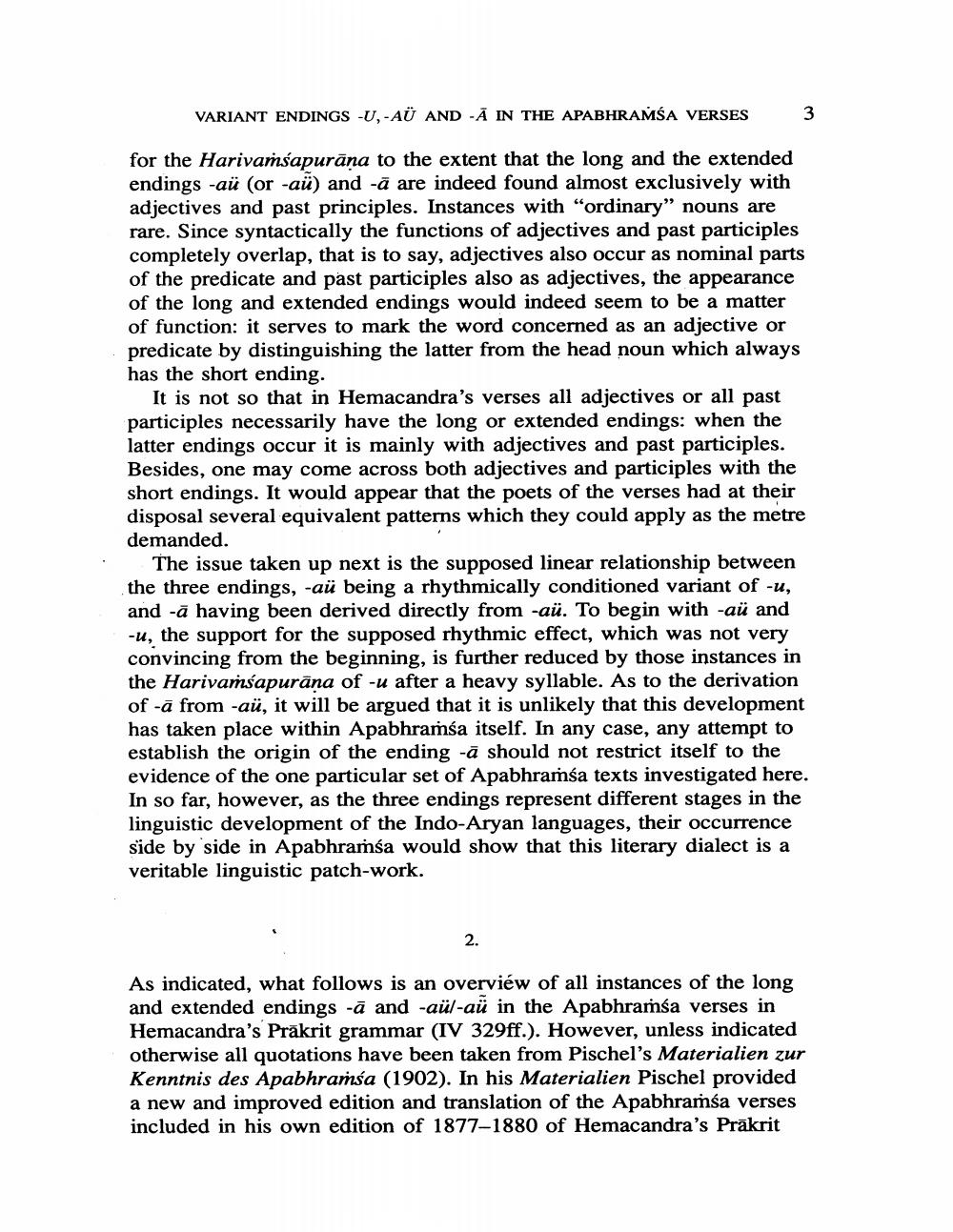________________
VARIANT ENDINGS -U, - AÜ AND -Ā IN THE APABHRAMŚA VERSES
3
for the Harivarśapurāna to the extent that the long and the extended endings -aü (or -aü) and că are indeed found almost exclusively with adjectives and past principles. Instances with "ordinary” nouns are rare. Since syntactically the functions of adjectives and past participles completely overlap, that is to say, adjectives also occur as nominal parts of the predicate and past participles also as adjectives, the appearance of the long and extended endings would indeed seem to be a matter of function: it serves to mark the word concerned as an adjective or predicate by distinguishing the latter from the head noun which always has the short ending.
It is not so that in Hemacandra's verses all adjectives or all past participles necessarily have the long or extended endings: when the latter endings occur it is mainly with adjectives and past participles. Besides, one may come across both adjectives and participles with the short endings. It would appear that the poets of the verses had at their disposal several equivalent patterns which they could apply as the metre demanded.
The issue taken up next is the supposed linear relationship between the three endings, -aü being a rhythmically conditioned variant of -u, and -ā having been derived directly from -aü. To begin with -aü and -u, the support for the supposed rhythmic effect, which was not very convincing from the beginning, is further reduced by those instances in the Harivarśapurāna of -u after a heavy syllable. As to the derivation of -ā from -aü, it will be argued that it is unlikely that this development has taken place within Apabhramsa itself. In any case, any attempt to establish the origin of the ending -ā should not restrict itself to the evidence of the one particular set of Apabhramśa texts investigated here. In so far, however, as the three endings represent different stages in the linguistic development of the Indo-Aryan languages, their occurrence side by side in Apabhramsa would show that this literary dialect is a veritable linguistic patch-work.
As indicated, what follows is an overview of all instances of the long and extended endings -ā and -aül-au in the Apabhramba verses in Hemacandra's Prākrit grammar (IV 329ff.). However, unless indicated otherwise all quotations have been taken from Pischel's Materialien zur Kenntnis des Apabhramśa (1902). In his Materialien Pischel provided a new and improved edition and translation of the Apabhramsa verses included in his own edition of 1877-1880 of Hemacandra's Prākrit




